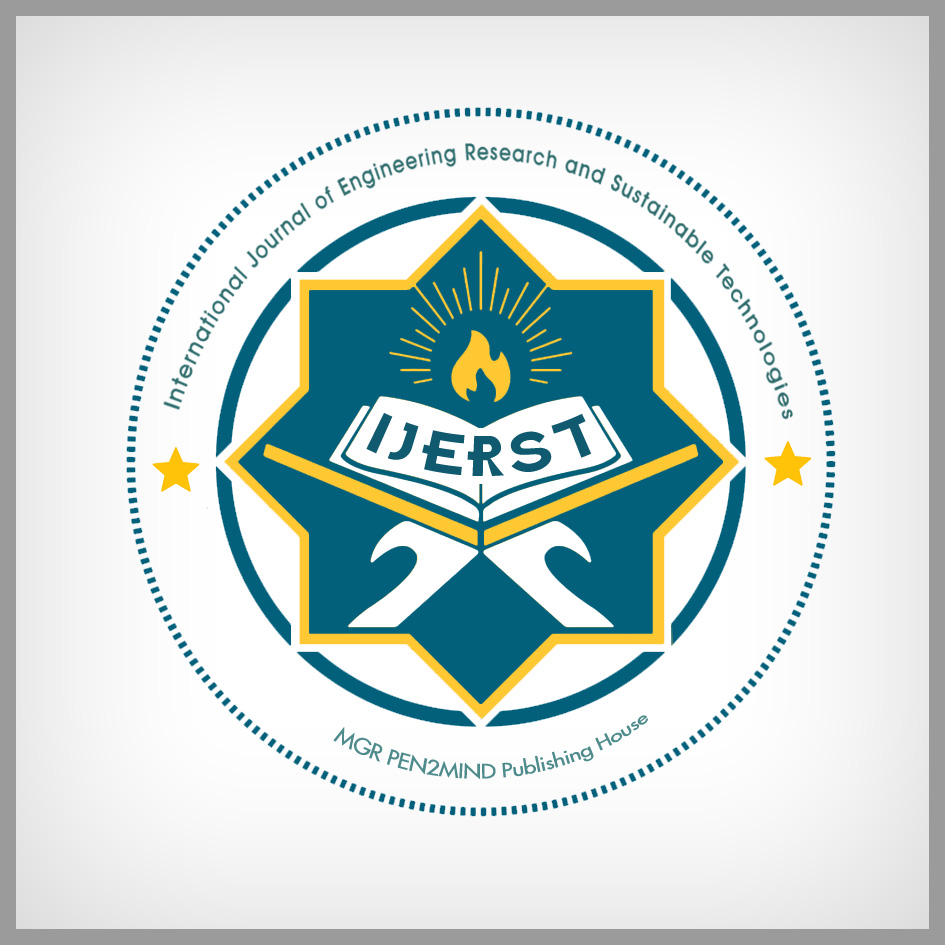DEEP LEARNING BASED CLASSIFICATION MODEL WITH DATA AUGMENTATION FOR SKIN CANCER DETECTION
DOI:
https://doi.org/10.63458/ijerst.v2i1.71Keywords:
Image Processing, Melanoma, Sequential, HAM10000, Skin lesion, BenignAbstract
Skin cancer is a major global public health concern, accounting for roughly 2.1 million new cases diagnosed globally each year. Improving survival rates requires early discovery and treatment, but one major obstacle is the scarcity of dermatologists in isolated areas. The application of deep learning and artificial intelligence to the prediction of skin cancer has increased dramatically in the last few years. This work investigates the wide range of machine learning algorithms used in this context and does a thorough assessment of sophisticated skin cancer prediction methods using deep learning techniques. Because of the overlapping phenotypic features, dermatologists face a tremendous task while diagnosing skin cancer, which consists of seven separate diagnoses. The range of 62% to 80% is normal for conventional diagnostic accuracy, highlighting the potential of machine learning to improve diagnosis and treatment. Although some researchers have developed binary skin cancer classification algorithms, it has been difficult to expand this to additional classes with better results. We created a deep learning classification model for different forms of skin cancer, and the findings show that deep learning is better at classification jobs. The results of the experiment show that when the accuracy of the CNN and Sequential models is combined, the Image Processing model produces the best accuracy. With an astounding 98% accuracy rate, the Image Processing model outperforms a comprehensive dermatological examination in terms of precision. Additionally, a comparison with the most recent skin categorization models highlights how much better the suggested multi type model for classifying skin cancer.
References
Maryam Naqvi, Syed Qasim Gilani, Tehreem Syed, Oge Marques and Hee-Cheol Kim, ‘Skin Cancer Detection Using Deep Learning’, 2023
Christopher Ebuka Ojukwu , ‘Melanoma Skin Cancer Detection Using Support Vector Machines (SVM) and Convolutional Neural Networks (CNN)’, Dec-2021
Venkata Charan. Nagasetty, Arun Kumar and Dr.Ravi Kumar, ‘Skin Cancer Detection Using Image Processing’2020.
Vijayalakshmi M.M, ‘Melanoma Skin Cancer Detection Using Machine Learning’y ,2019
Adekanmi Adegun and Serestina Viriri, ‘Deep learning techniques for skin lesion analysis and melanoma cancer detection ,2021
Syed Inthiyaz, Baraa Riyadh Altahan , Sk Hasane Ahammad , V Rajesh , Ruth Ramya Kalangi , ‘Skin disease detection using deep learning’
Himanshu K. Gajera, Deepak Ranjan Nayak, Mukesh A. Zaveri.,‘A comprehensive analysis of dermoscopy images for melanoma detection via deep CNN features’
Saad Albawi, Muhanad Hameed Arif, Jumana Waleed ,‘Skin cancer classification dermatologist-level based on deep learning model’. 2021.
Vijayalakshmi M M,, ‘Melanoma Skin Cancer Detection using Image Processing and Machine Learning’.2020
Soumya Kanti Datta, Mohammad Abuzar Shaikh, Sargur N Srihari Mingchen Gao, ‘Soft-Attention Improves Skin
Cancer Classification Performance’.2021
Ravi Manne, Snigdha Kantheti, Sneha Kantheti , ‘Classification of Skin cancer using deep learning, Convolutional
Neural Networks - Opportunities and vulnerabilities- A systematic Review’. 2020
Keerthana Duggani, Malaya Kumar Nath, ‘A Technical Review Report on Deep Learning Approach for
Skin Cancer Detection and Segmentation’. 2021
Yin Hao Wu, Bin Chen, An Zeng, Dan Pan, Ruixuan Wang and Shen Zhao, ‘Skin Cancer Classification with Deep Learning: A Systematic Review’.2022
R. Suganya , ‘An automated computer aided diagnosis of skin lesions detection and classification for dermoscopy images’, April 2016.
Ashraf R., Afzal S., Rehman A.U., Gul S., Baber J., Bakhtyar M., Mehmood I., Song O.Y., Maqsood M.,‘Region-of-Interest Based Transfer Learning Assisted Framework for Skin Cancer Detection’. IEEE Access. 2020.
Downloads
Published
How to Cite
Issue
Section
ARK
License
License Statement
This work is licensed under a Creative Commons Attribution 4.0 International License (CC BY 4.0).
Authors retain copyright of their articles and grant International Journal of Engineering Research in Science and Technology (IJERST) the right of first publication.
This license permits unrestricted use, distribution, and reproduction in any medium, provided the original author and source are credited.
The journal encourages open access and supports the global exchange of knowledge.




